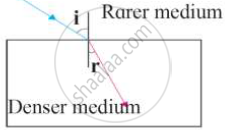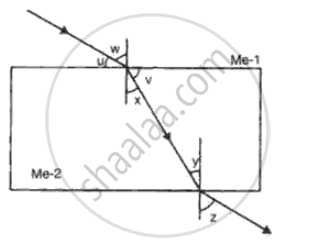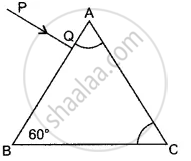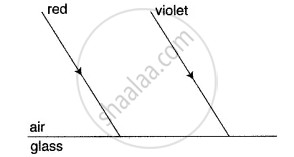Advertisements
Advertisements
Question
Light of a single colour is passed through a liquid having a piece of glass suspended in it. On changing the temperature of liquid, at a particular temperature the glass piece is not seen. When is the glass piece not seen?
Solution
The glass piece is not seen when the refractive index of liquid becomes equal to the refractive index of glass.
APPEARS IN
RELATED QUESTIONS
Why is the ratio of the velocities of light of wavelengths 4000Å and 8000Å in vacuum 1: 1?
A ray of light of wavelength 6600 Å suffer refraction from air to glass. Taking \[\ce{_a\mu_g = \frac{3}{2}}\], find the wavelength of light in glass.
While performing the experiment on tracing the path of a ray of light through a rectangular glass slab, in which of the following experimental set-ups is a student likely to get best results? P1 and P2 are the positions of pins fixed by him.
(A) I
(B) II
(C) III
(D) IV
Observe the figure and write accurate conclusion regarding refraction of light.

Make the correct for each of the following :
With reference to the fig, the refractive index of the glass block is

In what condition a prism is said to be in the position of minimum deviation? What is the direction of the refracted ray inside the prism in this condition?
Complete the ray diagram showing its emergence into the air after passing through the prism.

Two parallel rays of Red and Violet travelling through the air, meet the air-glass boundary as shown in the above figure. Will their paths inside the glass be parallel? Give a reason for your answer.

Observe the figure and name the ray AB, ray CD, ray GH.

